Split-level patio ideas: 12 clever ways to link your spaces
These split-level patio ideas will bring your plot to life and help you design and connect multi-level seating areas in your outdoor space
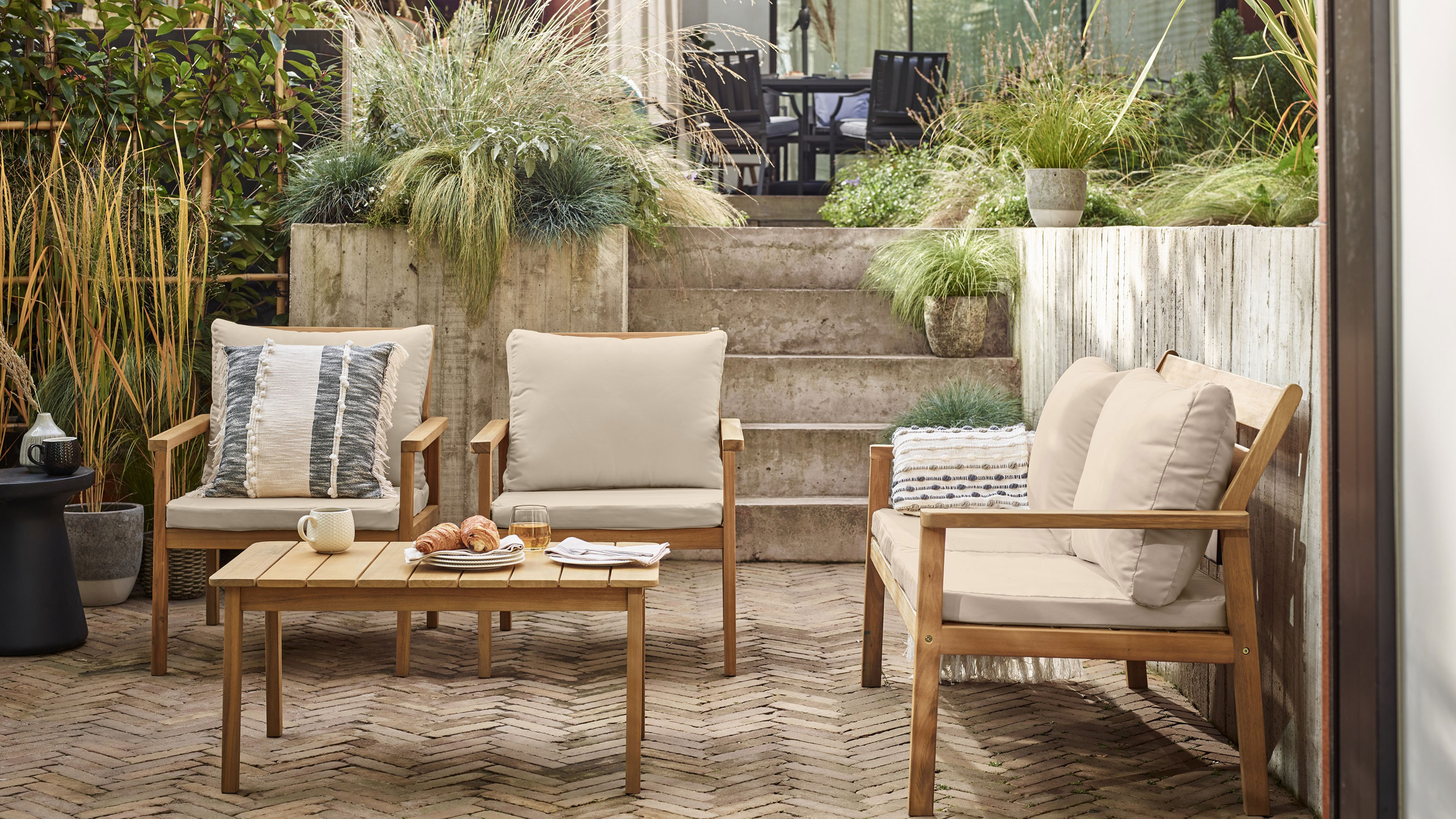

When it comes to adding interest to a plot, these split-level patio ideas provide the perfect balance of creative thinking and practicality. Often seen as a real design problem, a sloping site or multi-levelled plot can in fact provide the ideal opportunity to showcase different materials, explore clever planting and lighting ideas and incorporate falling water.
The challenge of linking two – or more – different levels can also lead also to more inventive and impactful color, material and planting palettes too.
If your plot is all on one level and lacking wow-factor, getting a little creative with your patio ideas can help to cozy up the space and make it more inviting. By adding a slightly raised deck to create a sun lovers lounge area or a more radical, recessed chill out zone with fire pit, you can change how you interact with and enjoy your outside area.
Whatever the current shape and layout of your garden, incorporating a split-level patio into your space could be the design solution you've been looking for.
Make use of your space with clever split-level patio ideas
If you’re after clever solutions for split-level patios, then you're in the right place. From large scale landscaping projects to game-changing design details for small patios, there's plenty to inspire in our favorite looks.
1. Visually link two patios with the same materials
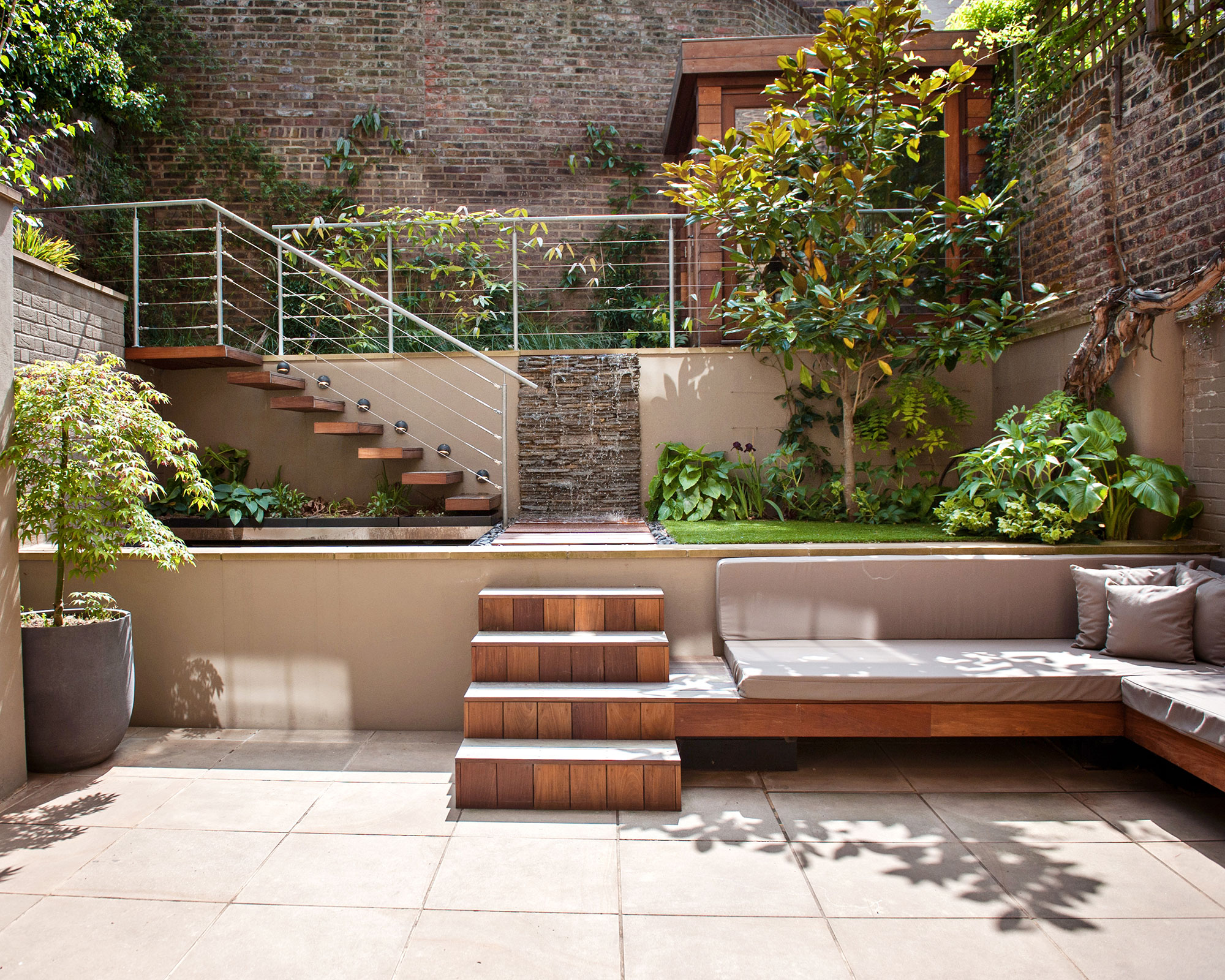
Faced with multi-level patios in your plot? Then creating a sense of unity is all important, not only to create a designer finish but to help make the space feel soothing and more spacious too.
One of the simplest ways to do this is to stick to a tight palette of materials and tones and use them repeatedly throughout your space for patio paving, steps and even seating. This will visually help tie the different areas together and ensure they don’t jar.
Taking their cue from the expansive brick wall in this London garden, the team at Fossey Aurora Design devised a rich and tactile courtyard garden. ‘Natural stone and imported hardwoods were set off against each other to create texture in the hard surfaces.’
An artificial lawn and stacked stone water feature take advantage of the various levels while ‘the plants dressing up the various levels were chosen for their low maintenance and seasonal value.’
2. Extend a covered patio to a lower level
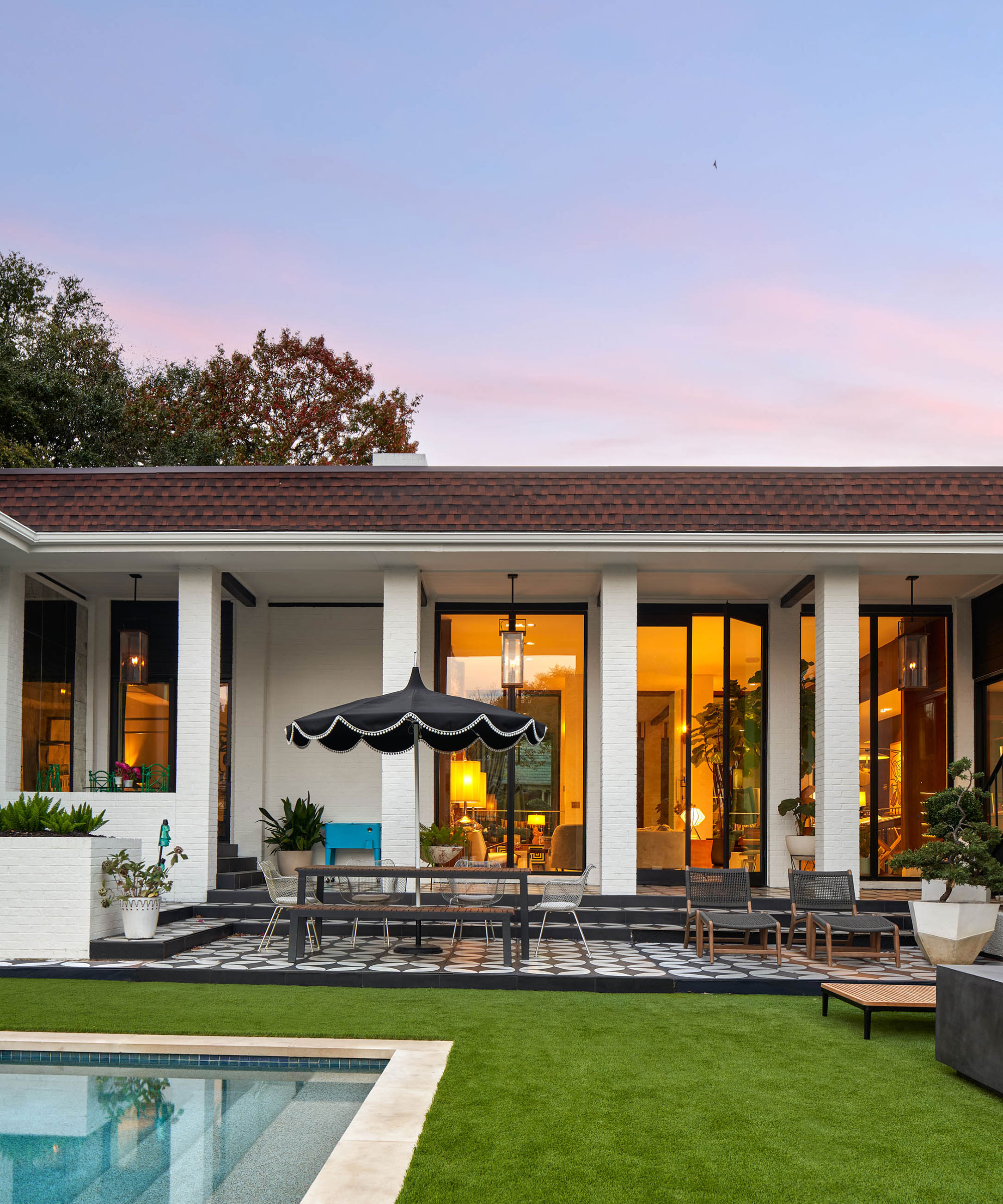
Black and white tiles make a feature of these two patios by Maestri Studio
For that perfect indoor-outdoor living vibe, enclosed patio ideas are the ideal solution for year-round outdoor entertaining, but what if you want the option to bask in the sunshine a little more?
In this project, the covered upper patio next to the house has been extended down to a lower level to create a stylish pool patio for sun-soaked days. By using the same patterned floor tiles across both patios, the split-level space is unified, while the monochrome furniture adds to the visual effect.
3. Use large scale planters to mark different patio levels
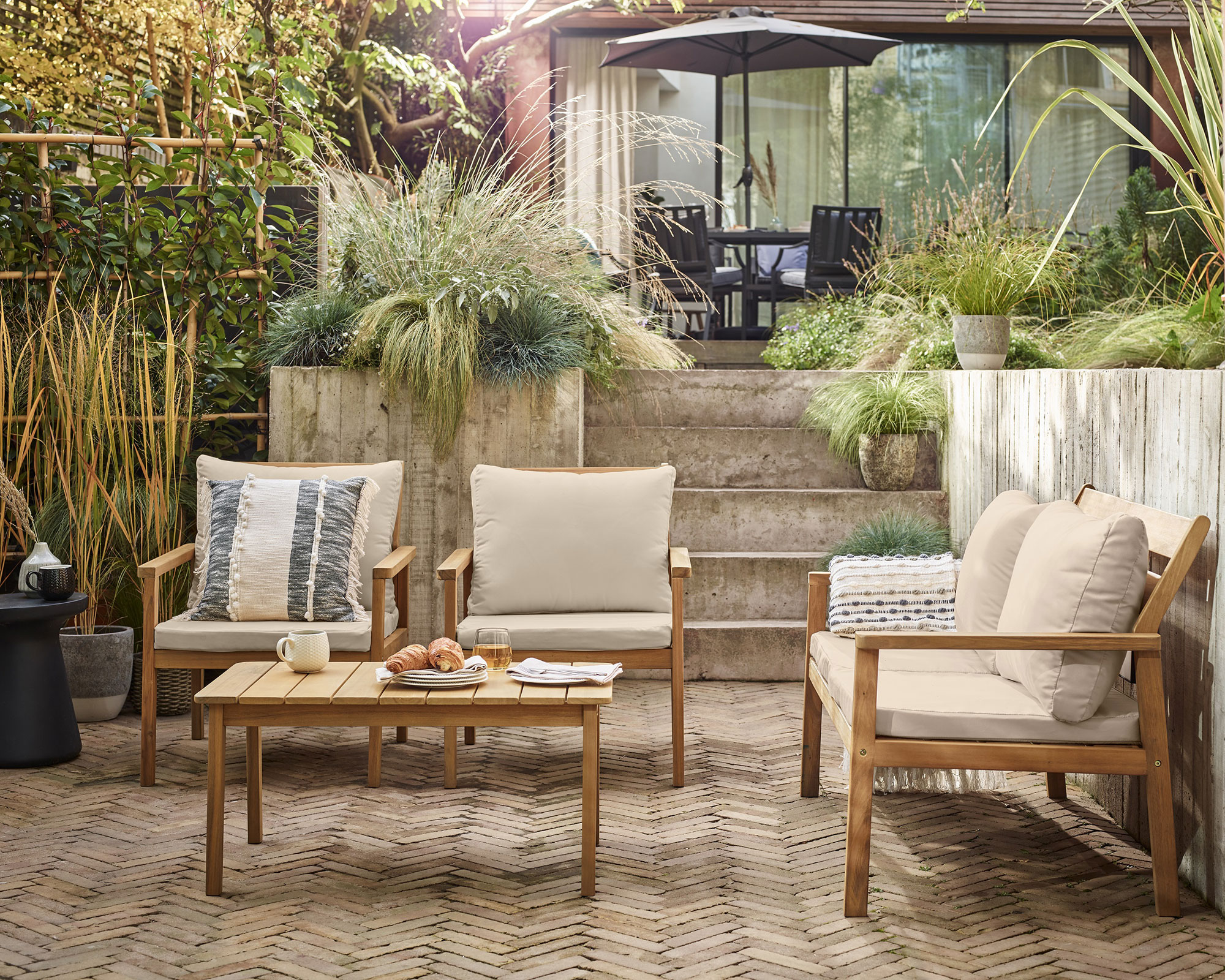
Accentuate the change in patio levels by including large-scale garden planter ideas in your patio landscaping.
Placing oversized square or rectangular containers alongside the different tiers of paving will visually link them as well as introduce a third sculptural dimension.
Industrial-style designs in standout materials such as concrete and corten steel work particularly well, creating a beautiful, weathered surface to contrast with smooth tiles or stone. Plant up with architectural shrubs or try landscaping with grasses to help balance and soften the change in levels.
4. Create terraced patios with rock-filled gabions
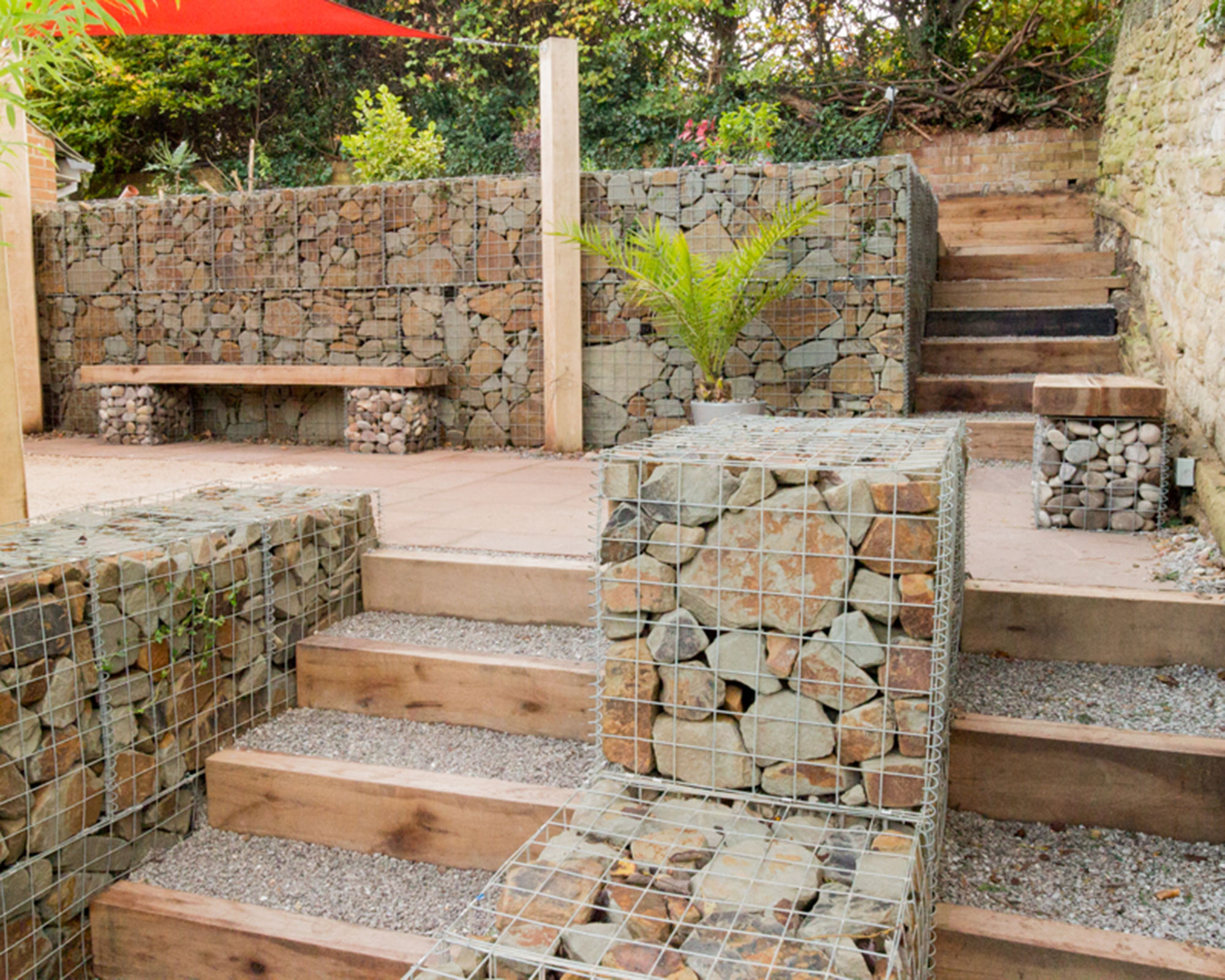
Virtually immovable but also rather attractive, stone-filled gabions are the ideal solution for your split-level patio ideas. Long loved by professional designers as a practical but stylish retaining wall idea, they offer endless structural and creative possibilities while the stone they are filled with can be tailored to your personal preference.
'For this project, gabions were chosen as they are both structural and decorative and don't use any concrete, which is great for sustainability,' says John Brennan from Yorkshire Gardens. 'The garden has a rise of 13ft (4m) from front to back, and the larger structural baskets are a metre cubed, which corresponds to around 3 tonnes of stone needed to fill them.'
5. Use lighting to highlight different levels
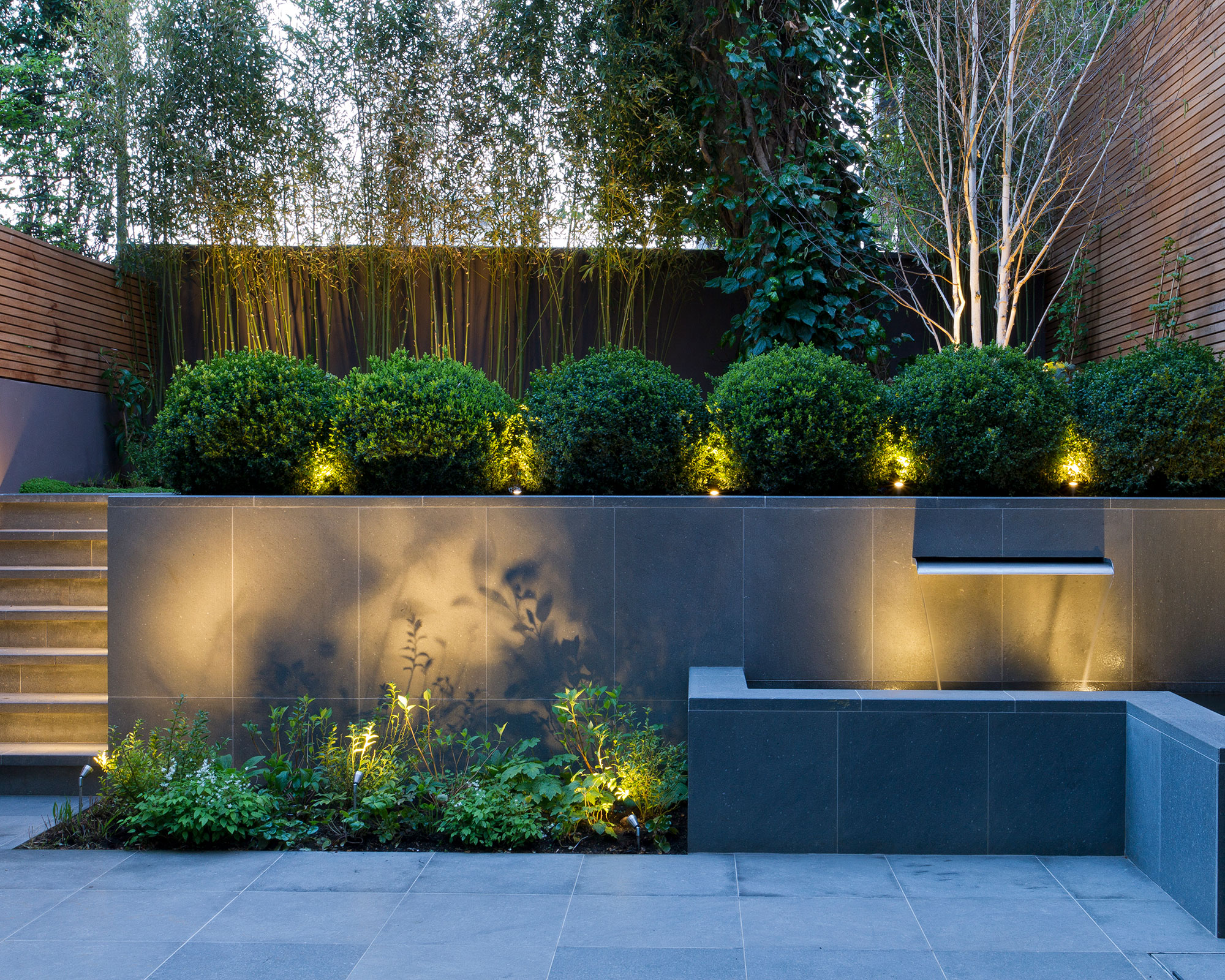
Garden designed by John Davies and built by Landform Consultants
Bring a neat and contemporary multi-tiered design alive with imaginative patio lighting ideas. Perfect for highlighting the change in levels from one patio to the next, it's also a practical signpost for hazards such as patio edges and stairs. Clever and thoughtful lighting can also accentuate less obvious features too.
Placing low voltage uplighters in between plants or a series of clipped box balls – as shown in this garden – reveals new rhythms and repeated forms, as well as drawing attention to the texture of the dense foliage.
Water features are another prime candidate for thoughtful lighting, especially when they cascade from an upper patio into a lower pool. Submerged uplighters illuminate the falling curtain of water and cast ever-changing shadows against the tiled garden wall behind. Angled LED spots have also been placed within the sprawling ground cover plants to create another enchanting shadow play.
6. Add interest with a multi-layered design
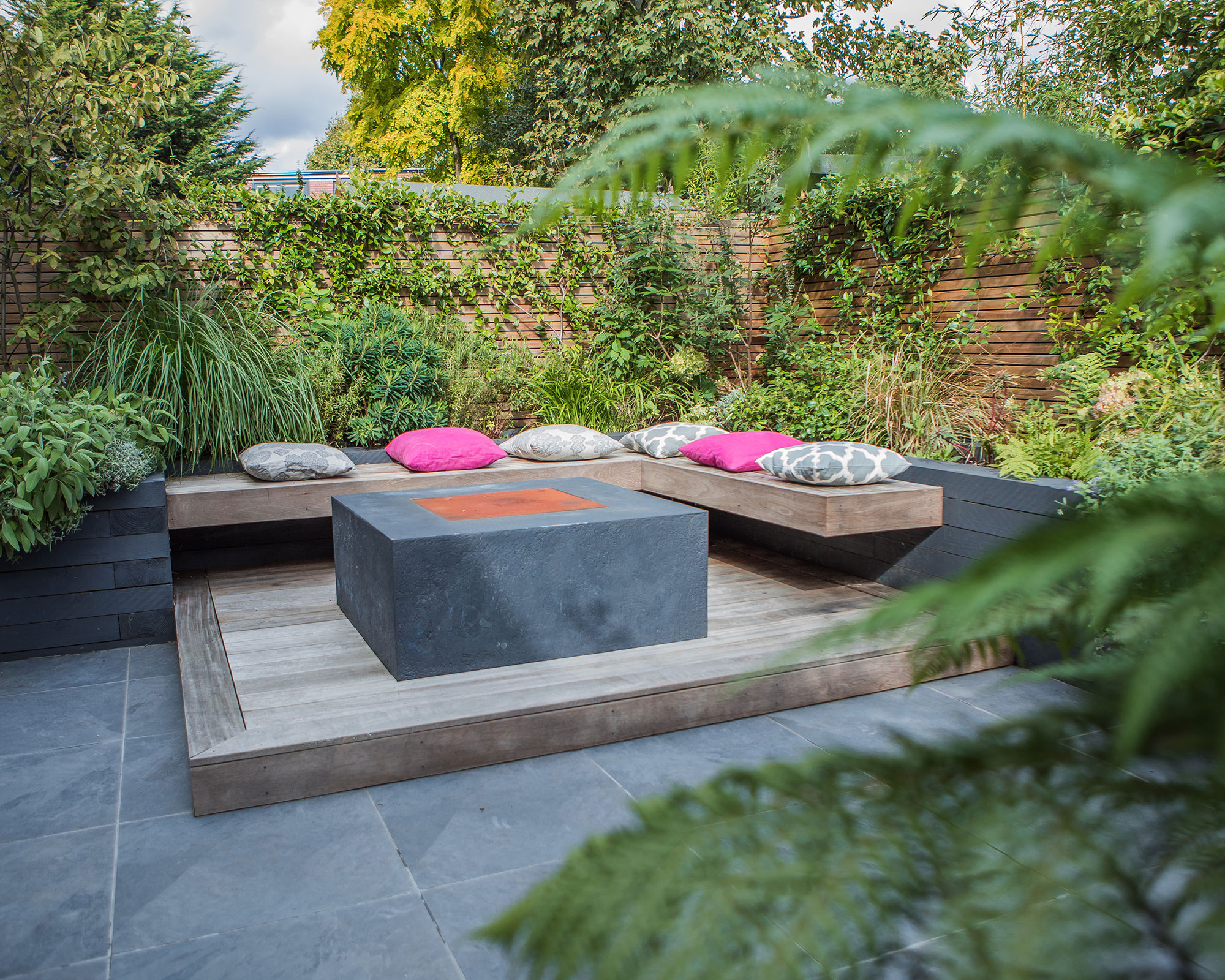
If your garden feels bland and is all on one level, think carefully about adding a second tier. It doesn’t have to be a big change in height, just adding another layer of patio flooring – whether it’s contrasting paving or a smaller hardwood deck – will instantly draw the eye to a key area and make the space more inviting.
Showcase the change in levels further by adding bold block style seating, raised garden beds and even a block coffee and fire pit table. All the interplaying shapes and horizontals will work together, enlivening the space with a sculptural sense of depth and form.
7. Frame a change in level with a patio pergola
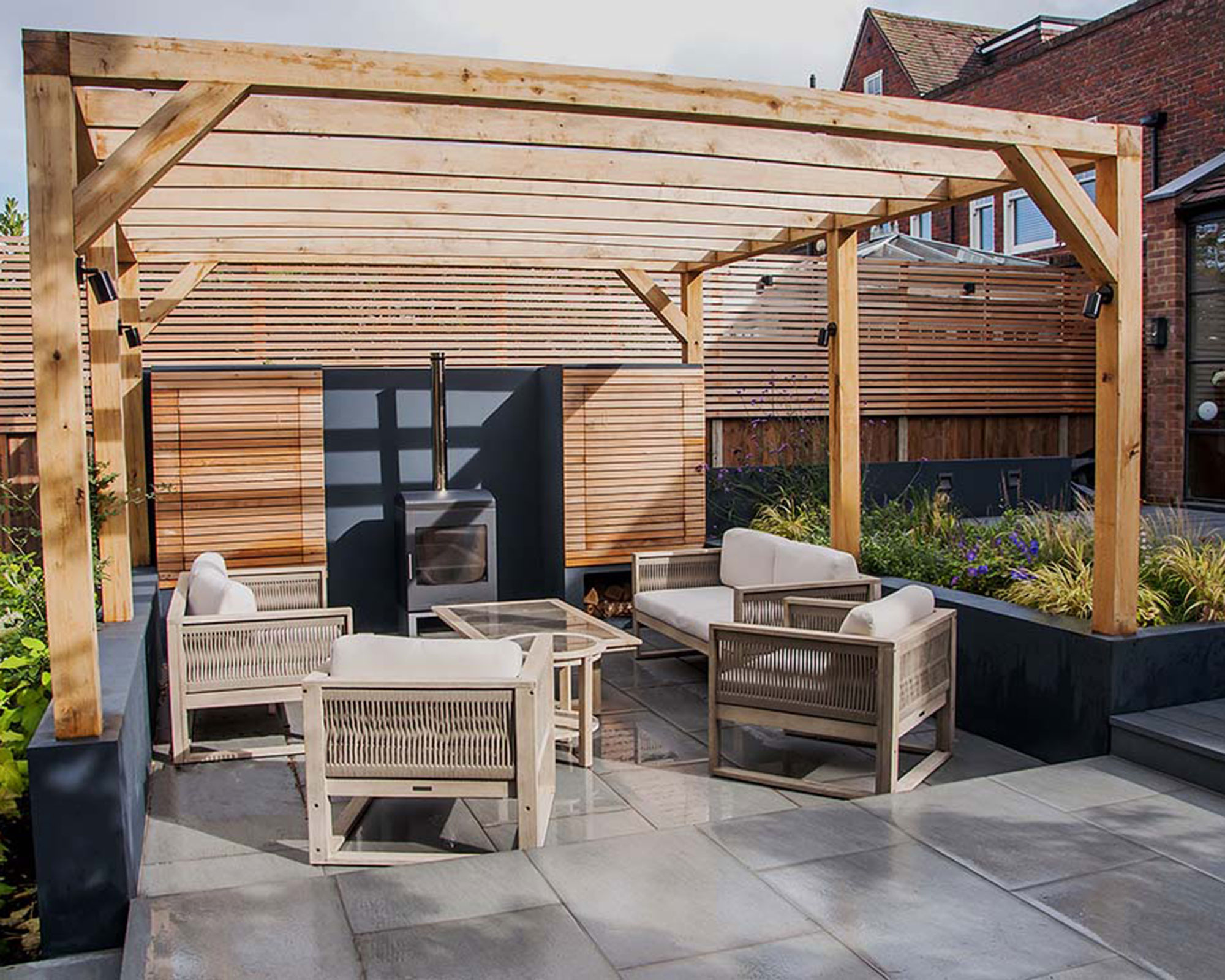
Maximize the impact of your split-level patio ideas by covering the area with a sturdy patio cover such as a pergola. By visually balancing the sunken level with an elevated timber or steel framework, the space is immediately given a room-like feel.
No longer just a sunken seating area, this space has a firm identity and can be furnished as an outdoor living room – as shown here – complete with outdoor stove, log store and fitted cabinetry.
A clever trick is to echo the design of your pergola in the shape and style of your furniture too. Here, cube-style seating with rope detailing complements the strong, clean lines of both the structure above and the slatted cedar cladding.
8. Make a feature of multiple patios with statement paving
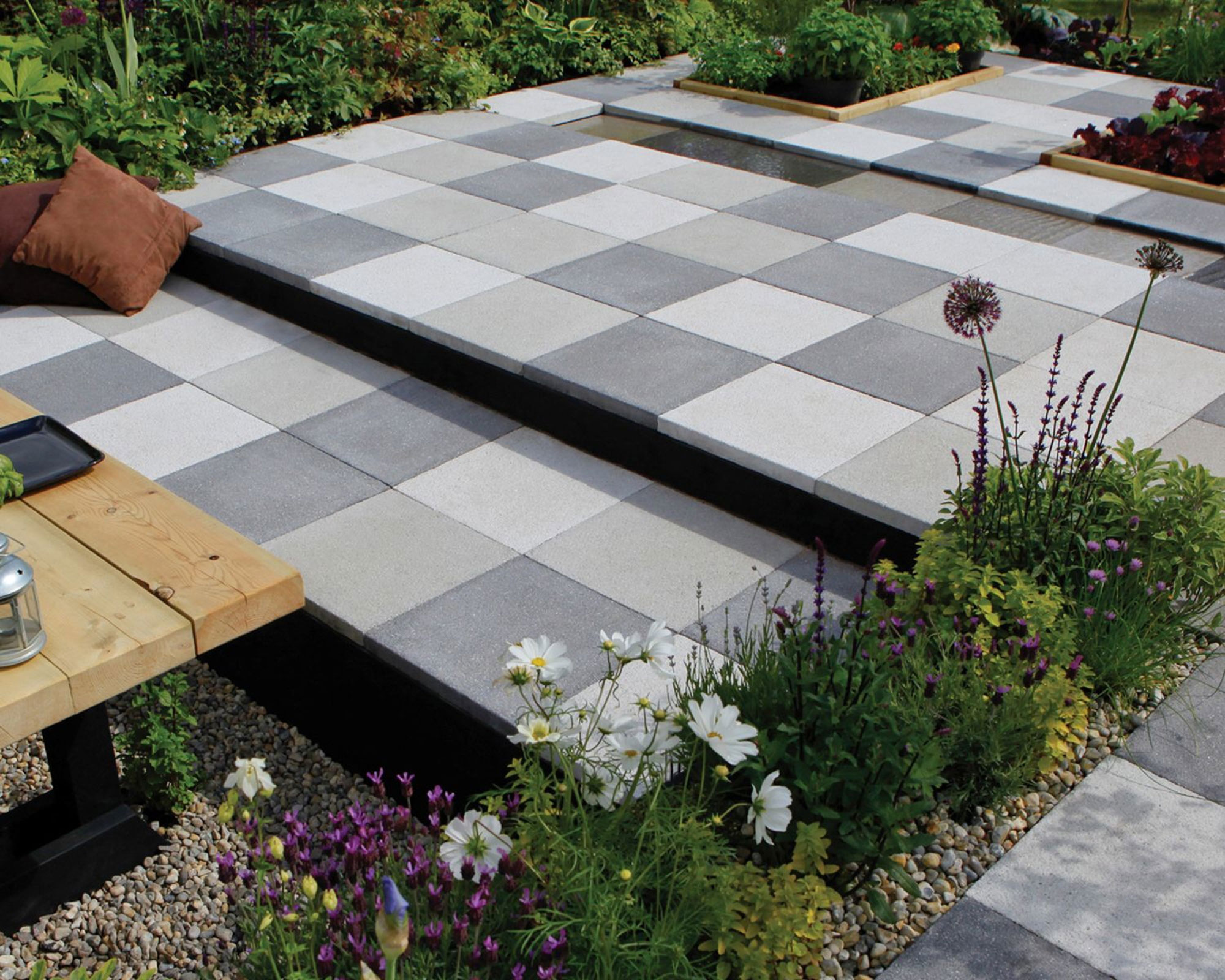
Patio flooring from B&Q
Don’t be shy about adding some wow-factor to your split-level patio. As shown here, bold paving that demands closer attention can work brilliantly across multiple levels.
When planning how to lay a patio in this style, you could go for a patchwork approach with simple composite stone slabs in monochrome tones or even a mismatched arrangement of plain and patterned tiles, Whatever you choose, the end result will create a striking feature in your plot.
As the sun moves around the garden the changes in a level will be revealed too. Shadows will deepen adding an extra layer of interest to your statement paving ideas and further contrast to other garden highlights such as gravel, textured planting or even a reflective pool or rill.
9. Link two patios with a strong color scheme
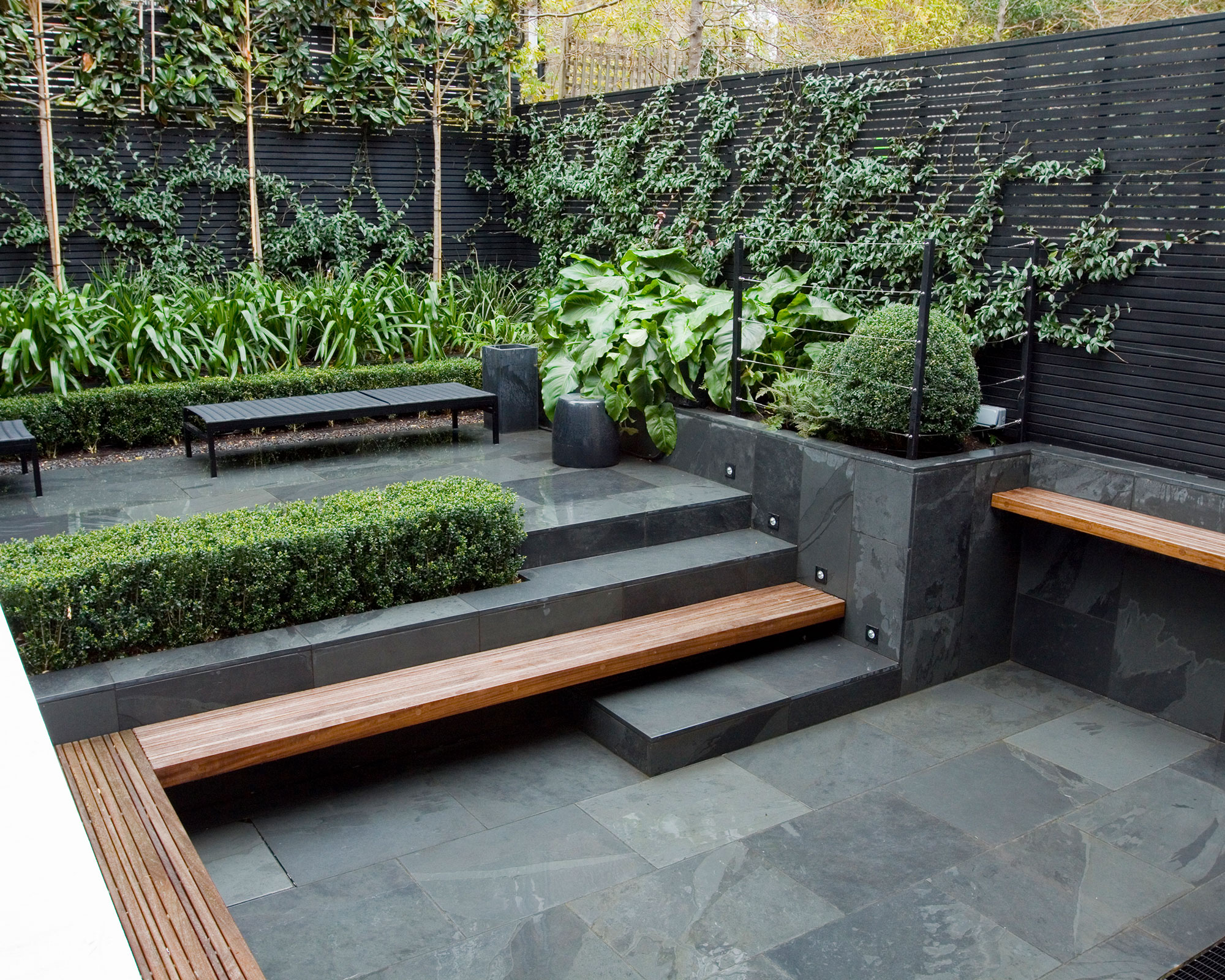
This contemporary city garden was designed by Declan Buckley and built by The Garden Builders
Divided into two smart levels, this courtyard garden showcases plenty of designer ideas. Elegant slate paving covers both the floor surface and many of the retaining walls and merges effortlessly with the black painted horizontal trellis to unify the garden color scheme, but the star of the show has to be the use of the warm toned timber.
‘Clever details abound such as the integration of an L-shaped cantilevered Iroko bench in the lower terrace’s flight of garden steps, giving it dual purpose as decorative seating and walkway,’ explain The Garden Builders.
Low clipped hedging, bands of tropical plants and regularly spaced standard magnolia trees further emphasize the geometric design.
10. Keep safety in mind by adding lighting to steps
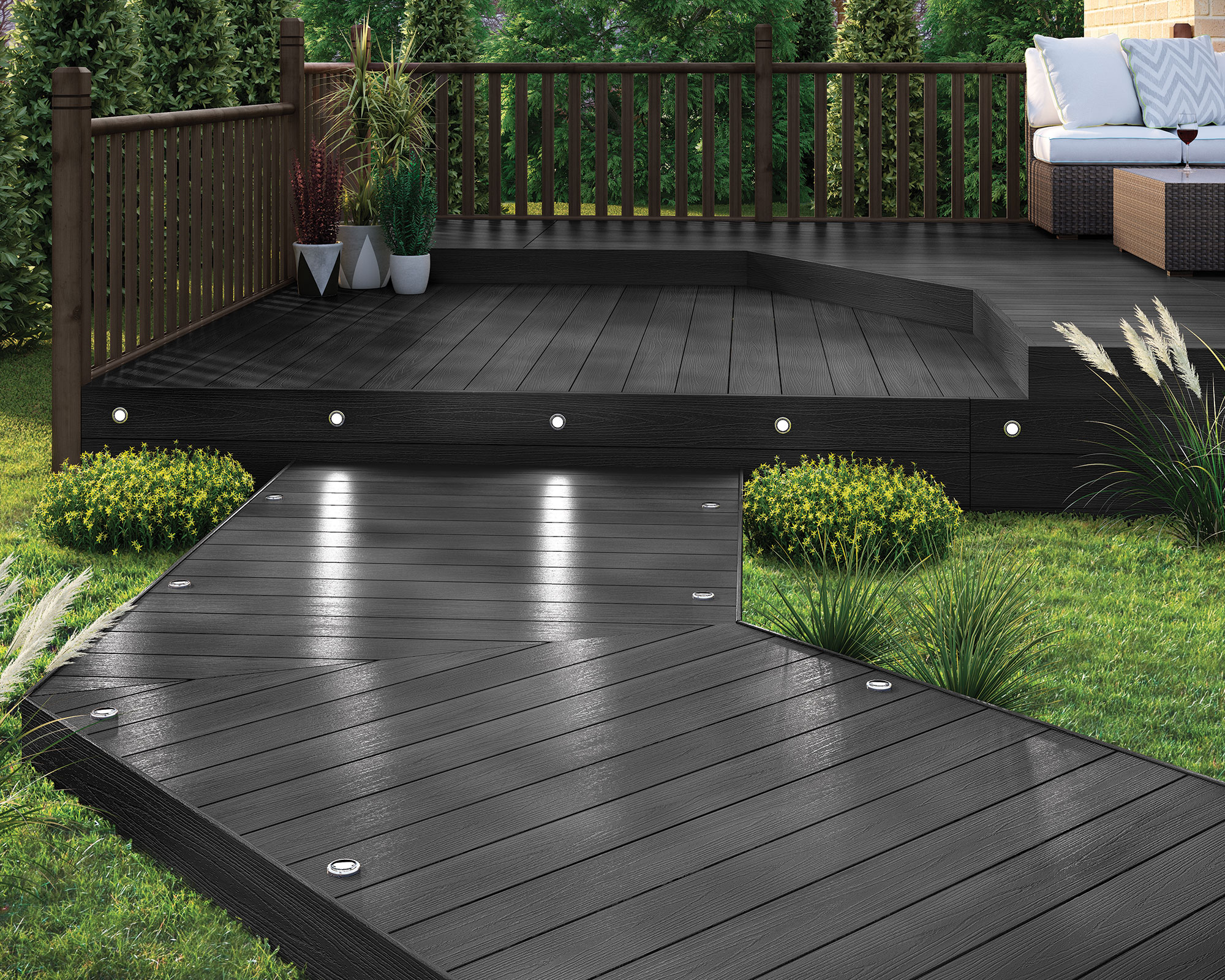
Both a matter of design and safety, highlighting a change in level on patios and walkways is essential. Flush-fitting, low voltage LEDs can be evenly spaced along fascia boards and along the edges of raised decking ideas to guide you safely along the way.
Timber deck railings along the edge of an elevated patio add further peace of mind and look amazing at night when lit from below.
11. Play with different levels
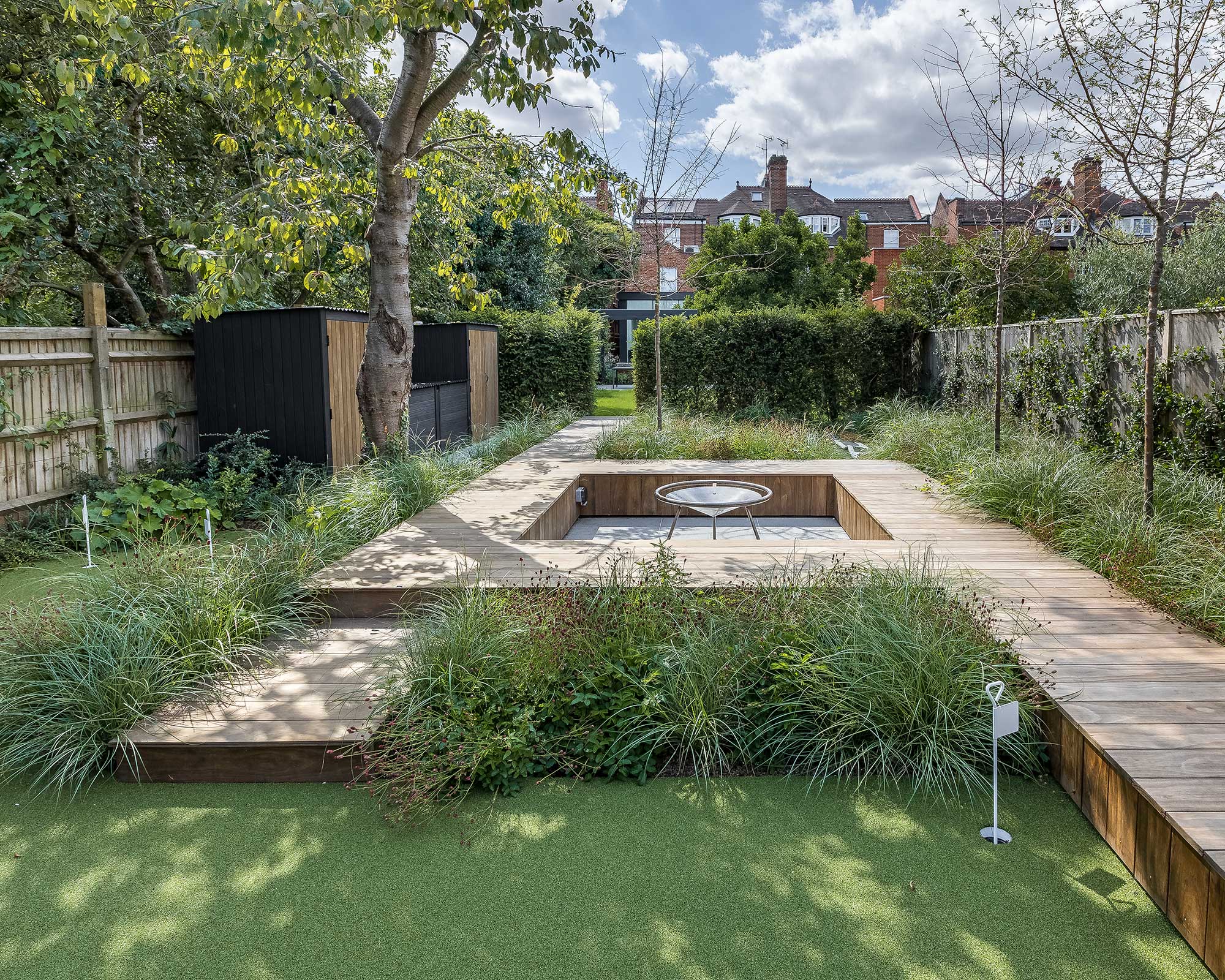
A sunken patio is instantly cossetting, but you can add to its impact by surrounding it with raised walkways that can also double up as additional patio space or seating areas. It's a really clever way of varying your garden levels and breaking up a long, rectangular space.
Few people can resist the temptation of exploring a raised timber garden path, so why should your plot be any different? As shown in this uber-contemporary design, it’s a great way to differentiate key areas of the garden and creates the perfect foil to areas of textured planting.
It also allows the sunken fire pit patio idea to become the main focal point and take center stage in the plot.
12. Make a feature of steps linking different patios
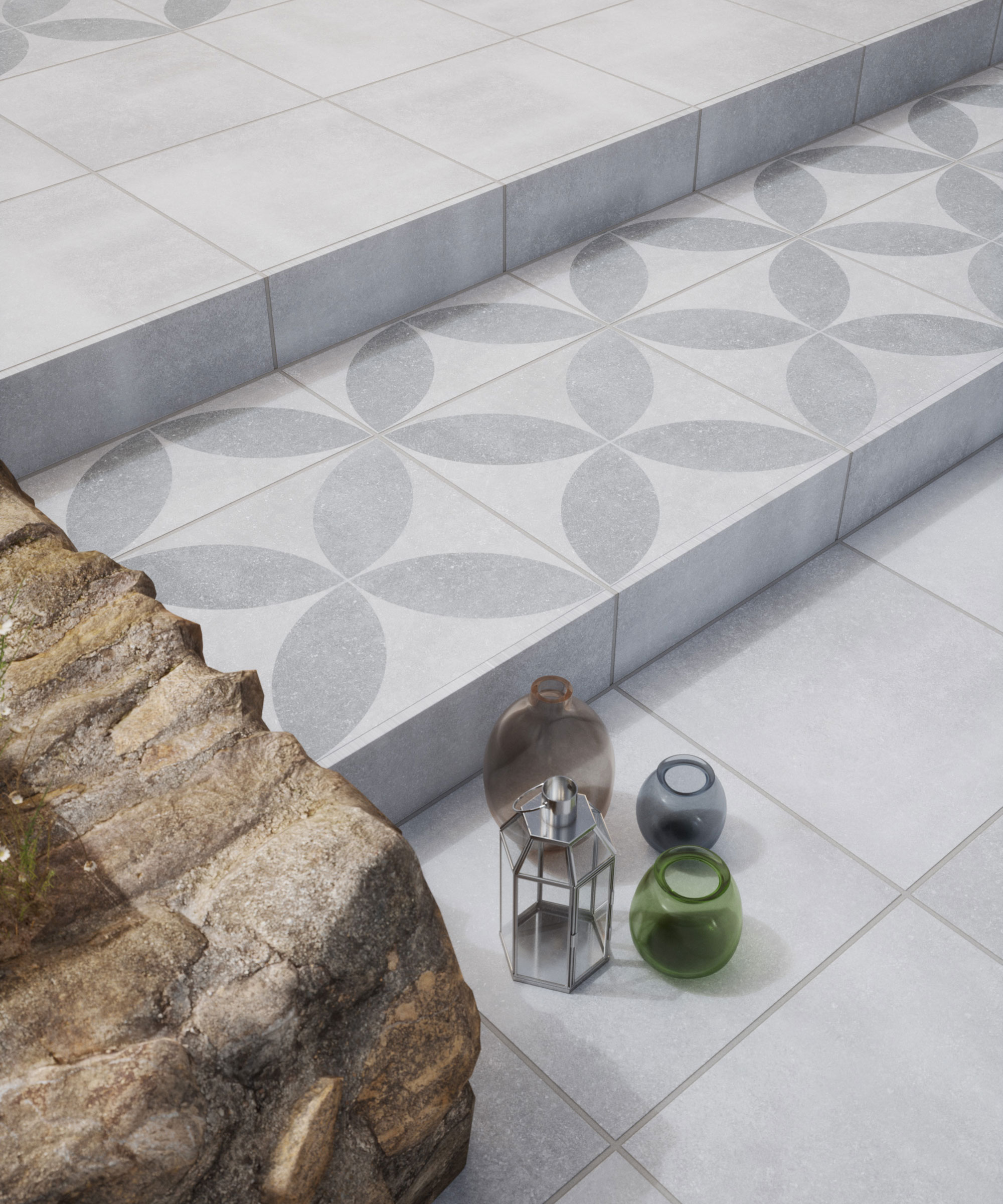
Simple but oh-so effective, highlighting steps or the borders of different levels with patterned paving is a fun and clever way to make more of your outside space.
A great way to introduce small amounts of pattern to your patio decor without it proving garish or overwhelming, it’s also an opportunity to truly personalize your split-level patio ideas, however big or small your plot.
How can I make the most of a split-level patio?
A multi-level patio may sound a tricky design feature to manage, but it can add tons of interest and creative opportunities.
There’s the option of choosing patio materials – do you use the same product on both levels plus the facing board for seamless flow, or boldly emphasize the change in level with contrasting surfaces? This could be using the same material in different colorways or textures or a dynamic pairing such as composite decking teamed with smooth stone.
There’s also the potential of exploiting the step between the two patio levels. LED lighting under a tiled overhang will always look dramatic, while a strip of corten steel or polished stainless steel will add a sleek designer finish.
If you're feeling more creative and fancy adding some movement, highlight the level change with a water feature – a neat ribbon or steady fall into a pool below will create a mesmerising focal point.
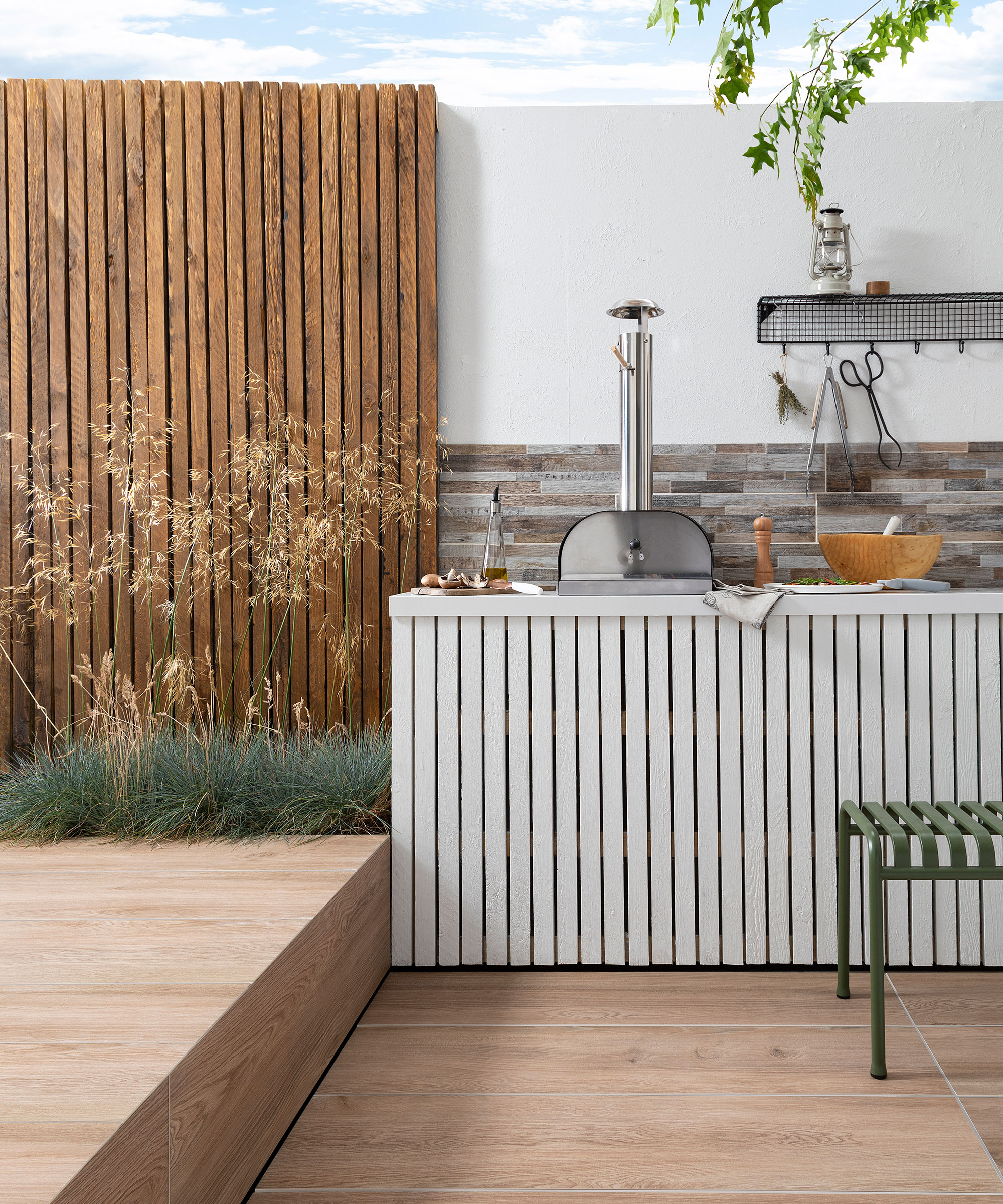
What are the smartest design tricks to link different height patios?
- Use the same paving surface across both patios and the adjoining wall for seamless continuity.
- Make the most of a change in height by building in a falling water feature.
- Link the levels with an architectural flight of stairs and bold stair rail.
- Break up a harsh change in levels with an oversized geometric feature such as an industrial-sized planter filled with patio plants or a striking standardised tree.
- Lighting is a great way to blur boundaries and divert the gaze to key garden features.
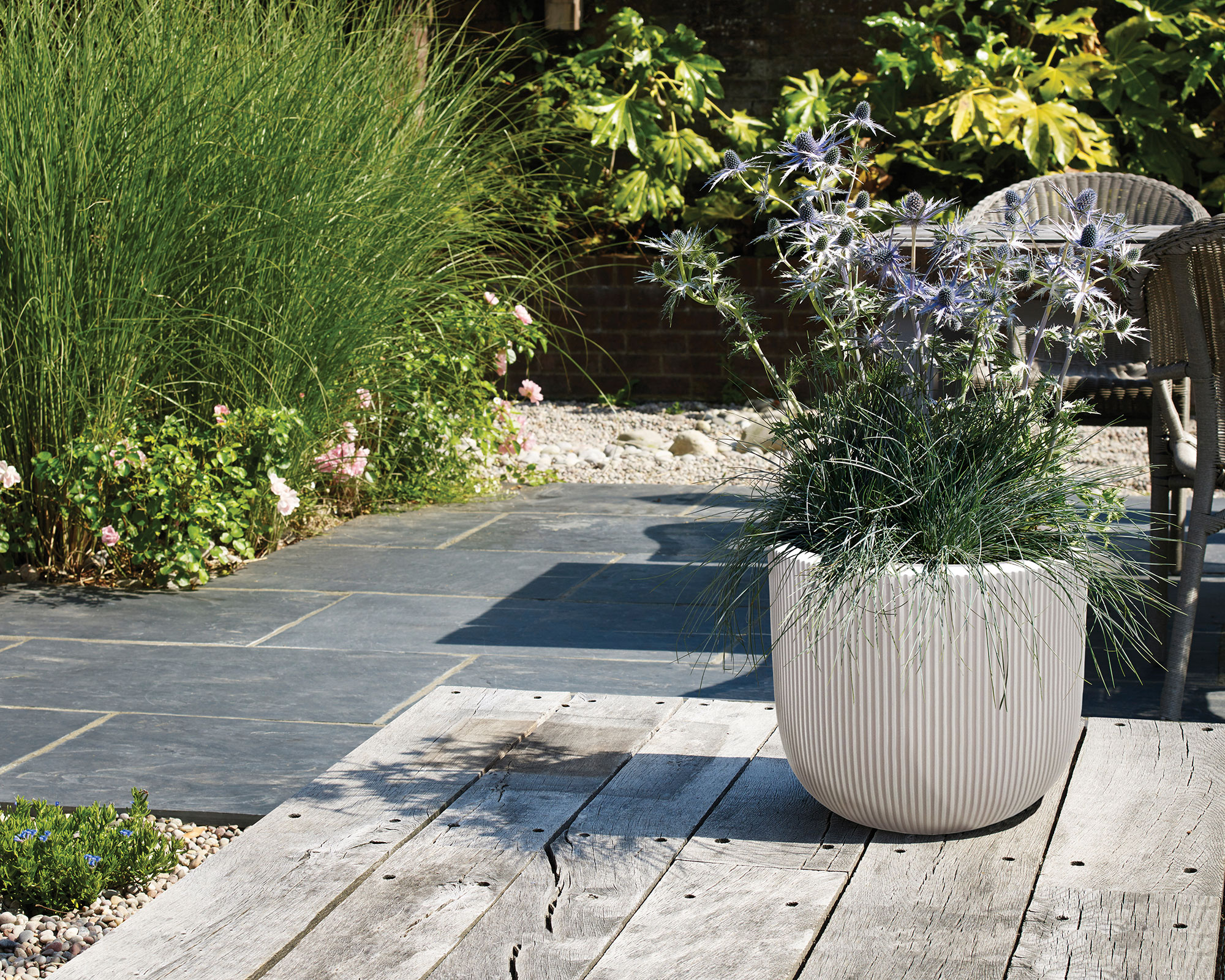

Jill puts her love of plants and all things garden related down to the hours spent pottering around with her Nan and Grandad when she was little. Today she is lucky enough to have a garden of her own in Surrey, England, and spends much of her time writing about them too.
